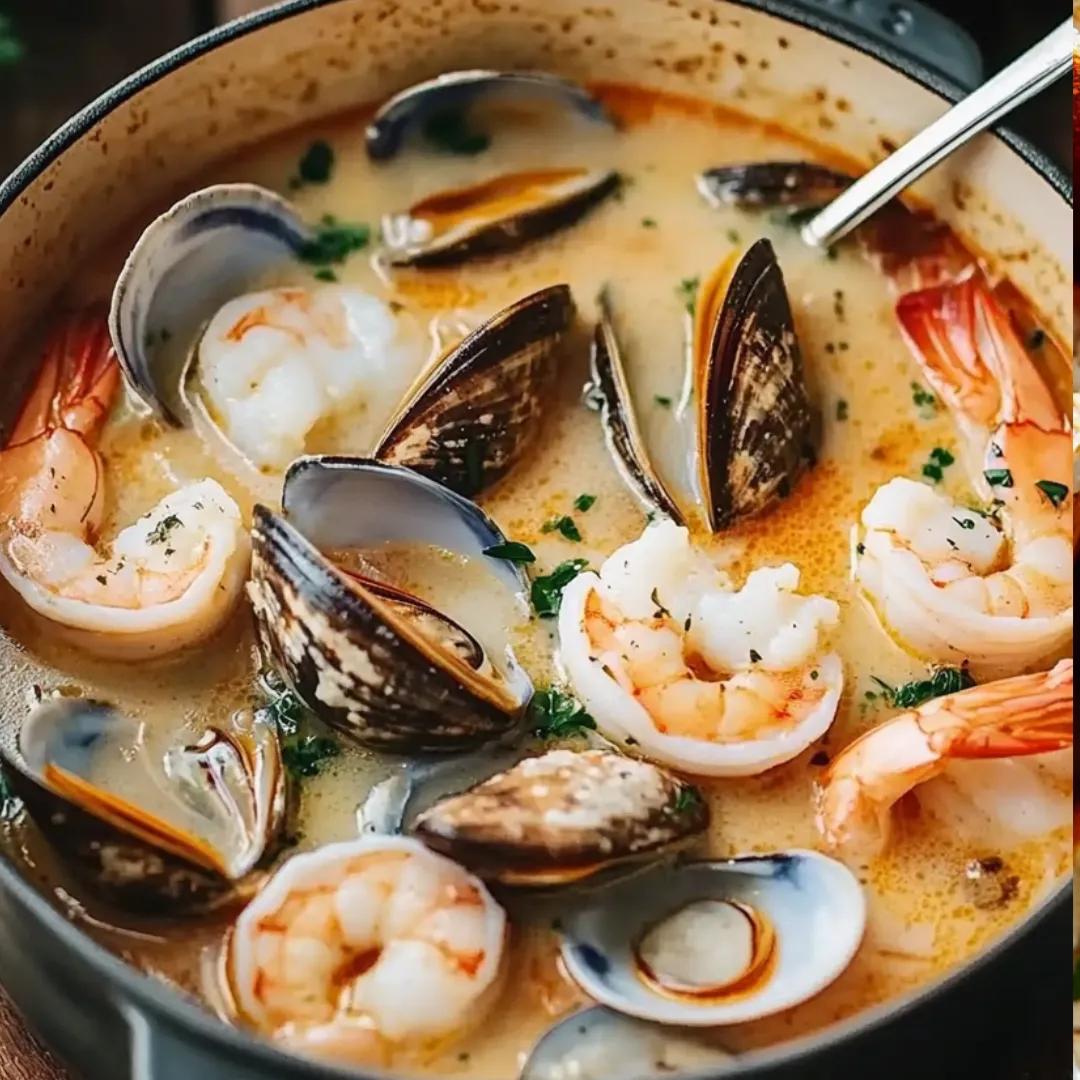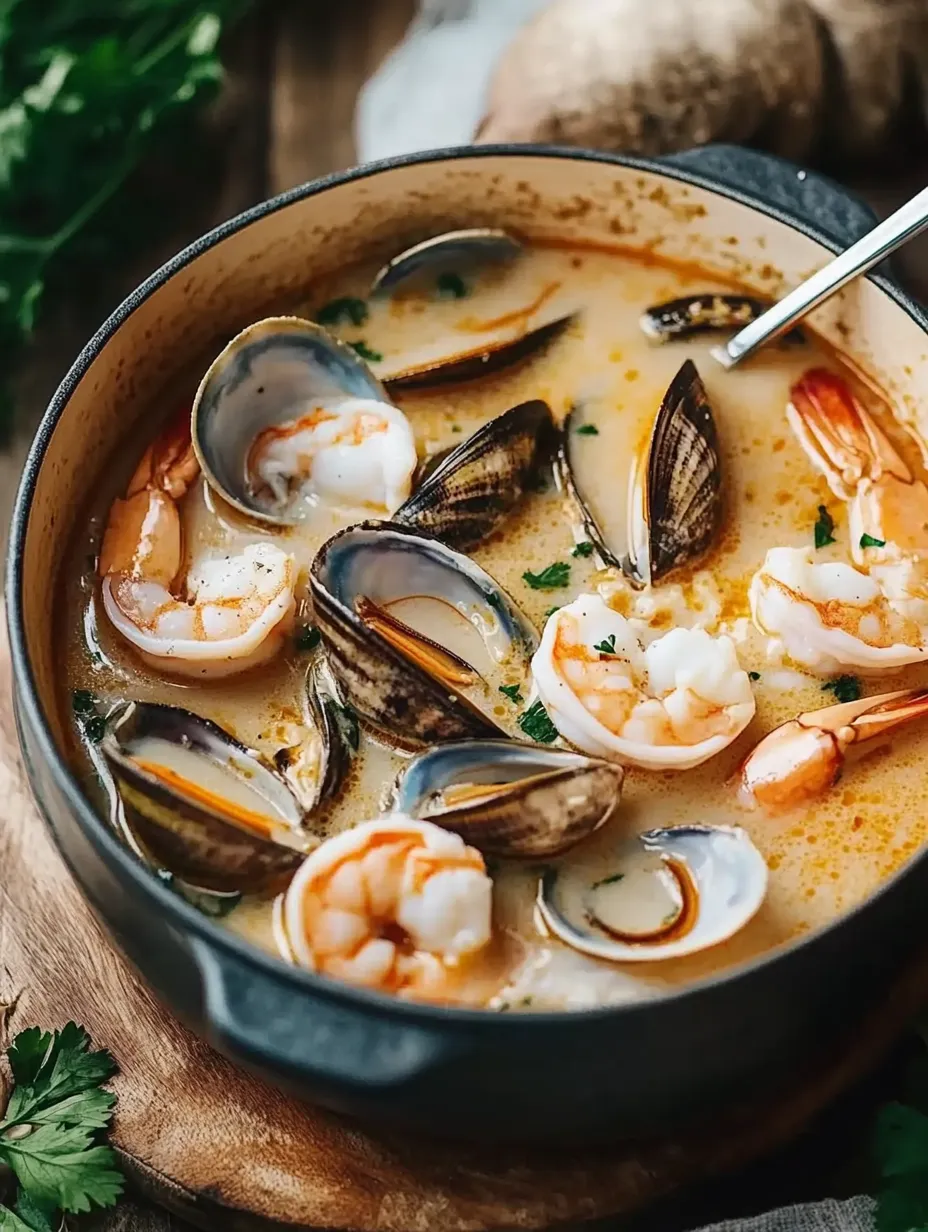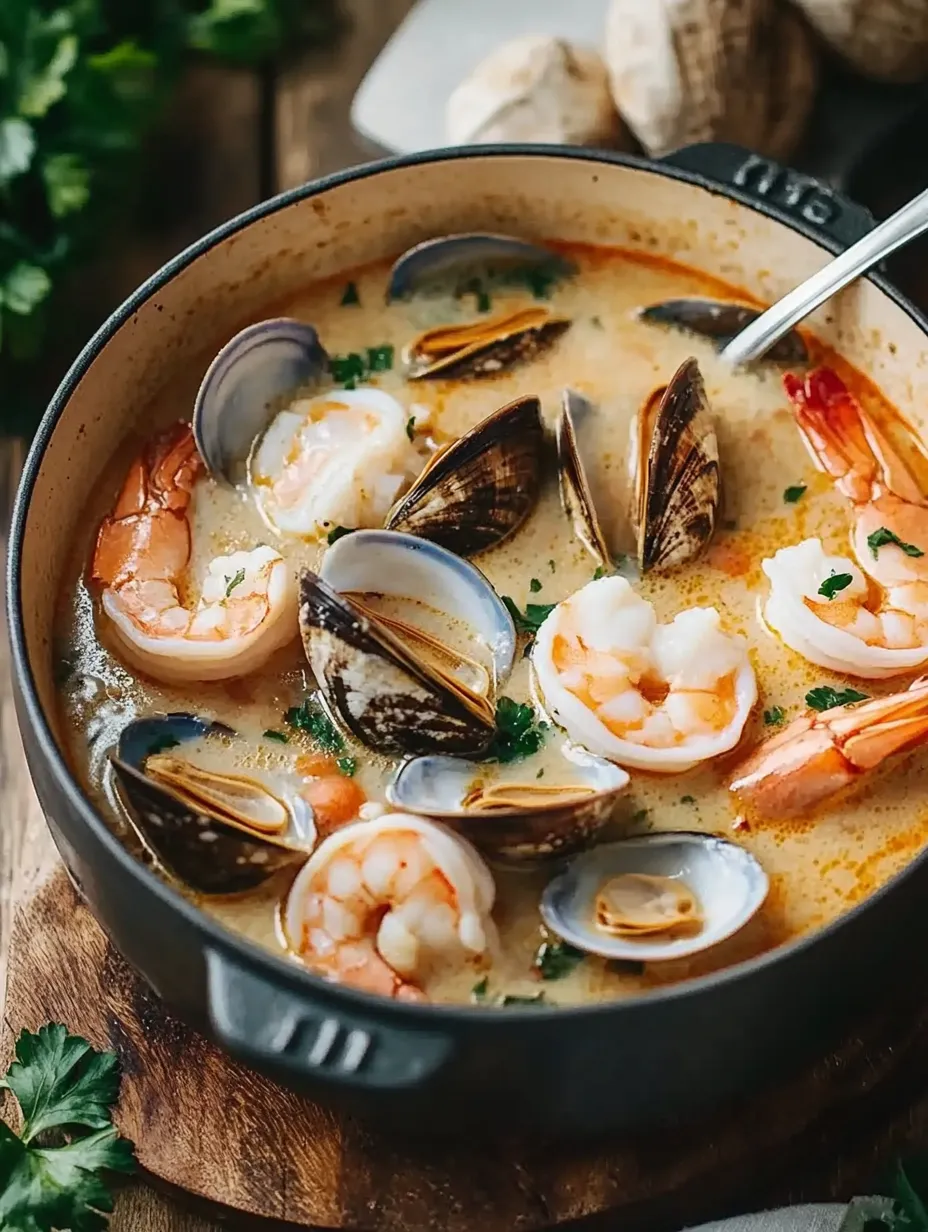 Save Pin
Save Pin
This hearty ocean stew brings together the taste of seaside eating with a mix of juicy seafood swimming in a flavorful, scented broth. The mix of plump shrimp, soft white fish, and salty shellfish makes a fancy-looking meal that's actually pretty easy to whip up at home.
I threw this soup together during a stormy day at our beach house when we had plenty of fresh seafood but couldn't go outside. The amazing smell took over our tiny kitchen, and now we make this soup whenever we want that beachy feeling without leaving home.
What You'll Need
- Olive oil: Builds the flavor base right from the start
- Onion, garlic, celery, carrot, and bell pepper: Make up the tasty veggie mix that gives depth to your soup
- Dried thyme and basil: Add those Mediterranean touches that work so well with seafood
- Fish or seafood stock: The key for real flavor, try to find one without extra stuff in it
- Canned diced tomatoes: Give a nice tang that cuts through the richness
- White wine: You can skip it, but it does make everything taste better
- Shrimp: Go for medium or large ones so they don't get lost in the soup
- Mussels or clams: Need to be fresh with shells shut tight showing they're still alive
- White fish: Something like cod or haddock stays together while still being tender
- Fresh parsley: Makes everything look pretty and adds fresh flavor at the end
- Lemon wedges: Let people add a squeeze of citrus to their own bowls
Simple Cooking Steps
- Cook Your Veggies:
- Warm the olive oil in a big pot with a heavy bottom over medium heat until it looks shiny but isn't smoking. Throw in your onion, garlic, celery, carrot, and bell pepper and cook them for about 7 minutes, stirring now and then. You want them soft but not brown so they get sweet naturally and set up the flavor for your whole soup.
- Wake Up The Herbs:
- Sprinkle in the dried thyme and basil with your soft veggies and keep stirring for 2 minutes straight. This really matters because it wakes up the herbs in the oil, letting out all their good smells and flavors into your broth. Your kitchen should start smelling really good now.
- Make Your Soup Base:
- Add your seafood stock, diced tomatoes, and white wine if you're using it. Use a wooden spoon to scrape all the tasty bits off the bottom of the pot. Let everything bubble gently, not too hard or your broth will get cloudy. Keep it uncovered for 20 minutes so flavors can mix and get stronger as some liquid cooks away.
- Put In The Seafood:
- Add your seafood in the right order so nothing gets overcooked. First put in the chunks of white fish and let them cook 2 minutes, then add your mussels or clams and cook another 2 minutes before dropping in the shrimp last. Cover the pot so the shells can open up right.
- Last Touches:
- When all shells have popped open and fish and shrimp look white and cooked through, try the broth and add salt and pepper if needed. Remember seafood's already salty, so go easy. Take the pot off the heat, throw some fresh chopped parsley on top, and serve it right away with lemon pieces on the side of each bowl.
 Save Pin
Save Pin
The stock you use really makes or breaks this soup. One time I made it with homemade stock from shrimp shells I'd kept in the freezer, and wow, it tasted so much better than with the store stuff. Even my daughter, who usually turns her nose up at seafood, asked for more—that's how much difference good stock can make.
Prep Ahead Options
This ocean stew tastes best right after you cook it when the seafood's super fresh and has the perfect texture. But if you need to get a head start, you can make the base broth (steps 1-3) up to two days early and keep it in the fridge. When you're ready to eat, just heat the broth until it bubbles gently and add your seafood as the recipe says.
If you have leftovers, they'll keep in the fridge for about 2 days, though the seafood might get a bit softer when you reheat it. Just warm it slowly on the stove over medium-low heat until it's hot, but don't let it boil or your seafood will get tough. I wouldn't try freezing this soup since seafood tends to get rubbery when frozen and reheated in liquid.
Picking The Best Seafood
Getting amazing seafood soup starts with buying the freshest stuff you can find. For mussels and clams, look for ones with tightly closed shells, or shells that close when you tap them gently, which shows they're alive. Toss out any that stay open before cooking or stay closed after cooking.
When buying shrimp, wild-caught usually tastes better and has nicer texture. If you use frozen shrimp, make sure they're completely thawed in the fridge before adding them so they cook evenly. For white fish, go with types that stay together during cooking—cod, haddock, halibut, or sea bass all work great.
What To Serve With It
This chunky seafood soup becomes a full meal when you serve it with some crusty sourdough bread for soaking up all that tasty broth. In my house, we often put out a small dish of garlic aioli that people can swirl into their own bowls to add some richness.
For fancy dinners, serve in wide, shallow bowls to show off all the pretty seafood. A simple green salad with lemon dressing goes well with the rich soup without fighting with its flavors. If you're having wine, try a crisp, clean white like Albariño or Vermentino that matches the beachy roots of this dish.
 Save Pin
Save Pin
Common Recipe Questions
- → What seafood goes great in this soup?
Go for just-caught shrimp, mussels, clams, and light fish such as cod or haddock for maximum taste and juiciness.
- → Can I skip the wine?
Sure, just pour in more seafood stock or water instead of white wine to keep the soup at the right thickness.
- → What veggies should I throw in?
Try chopped carrots, celery, onion, and bell peppers, as they add nice flavor and a touch of sweetness to your soup.
- → How do I make it hotter?
For extra heat, toss in some crushed red pepper flakes or chopped fresh chili peppers.
- → When is the seafood done cooking?
Your shrimp will turn pink and get firm, while mussels or clams will pop open. Just throw away any shells that stay closed.
- → Can I freeze this for later?
You can, but it's better to freeze the broth alone and add newly cooked seafood when you warm it up so it doesn't get rubbery.
